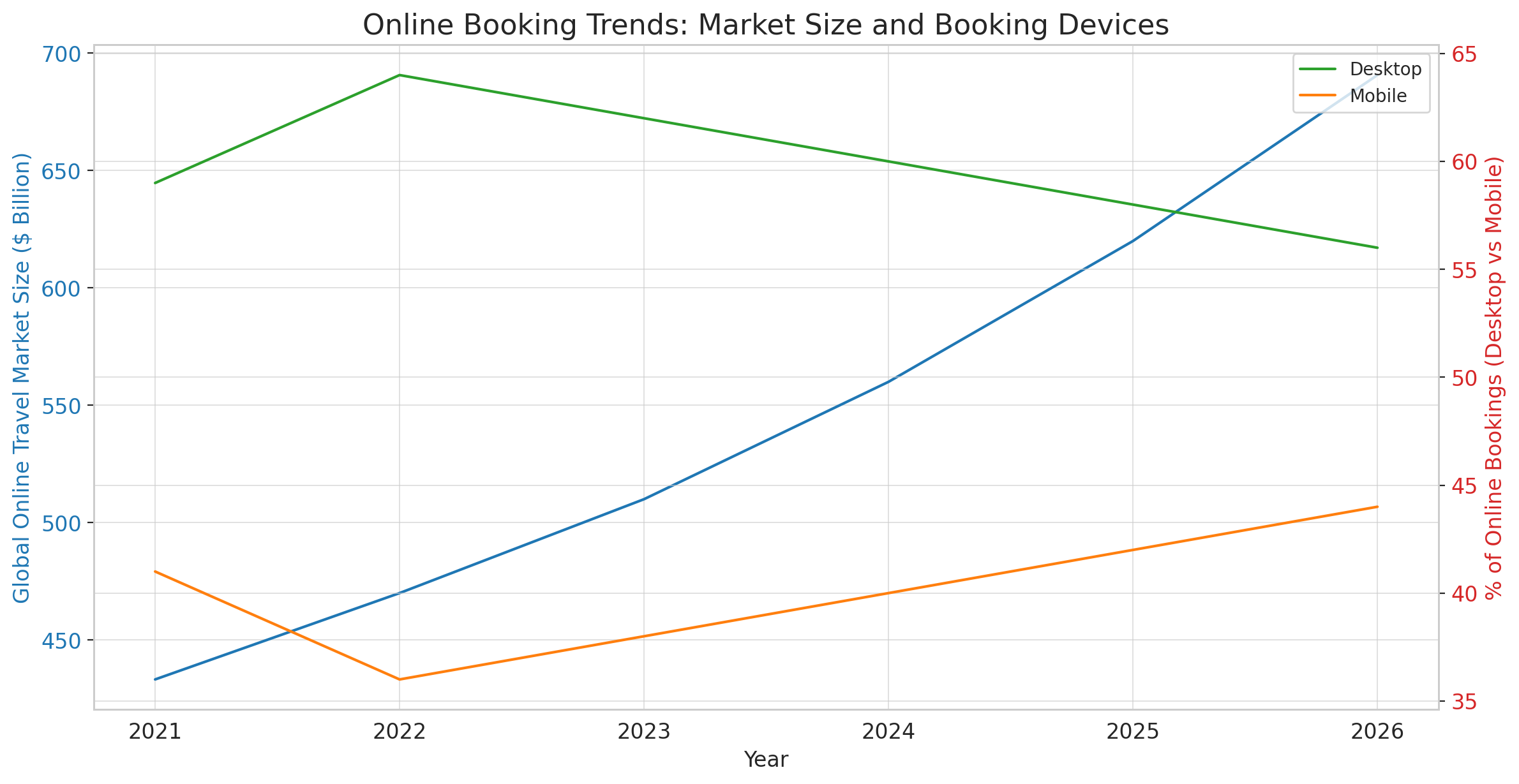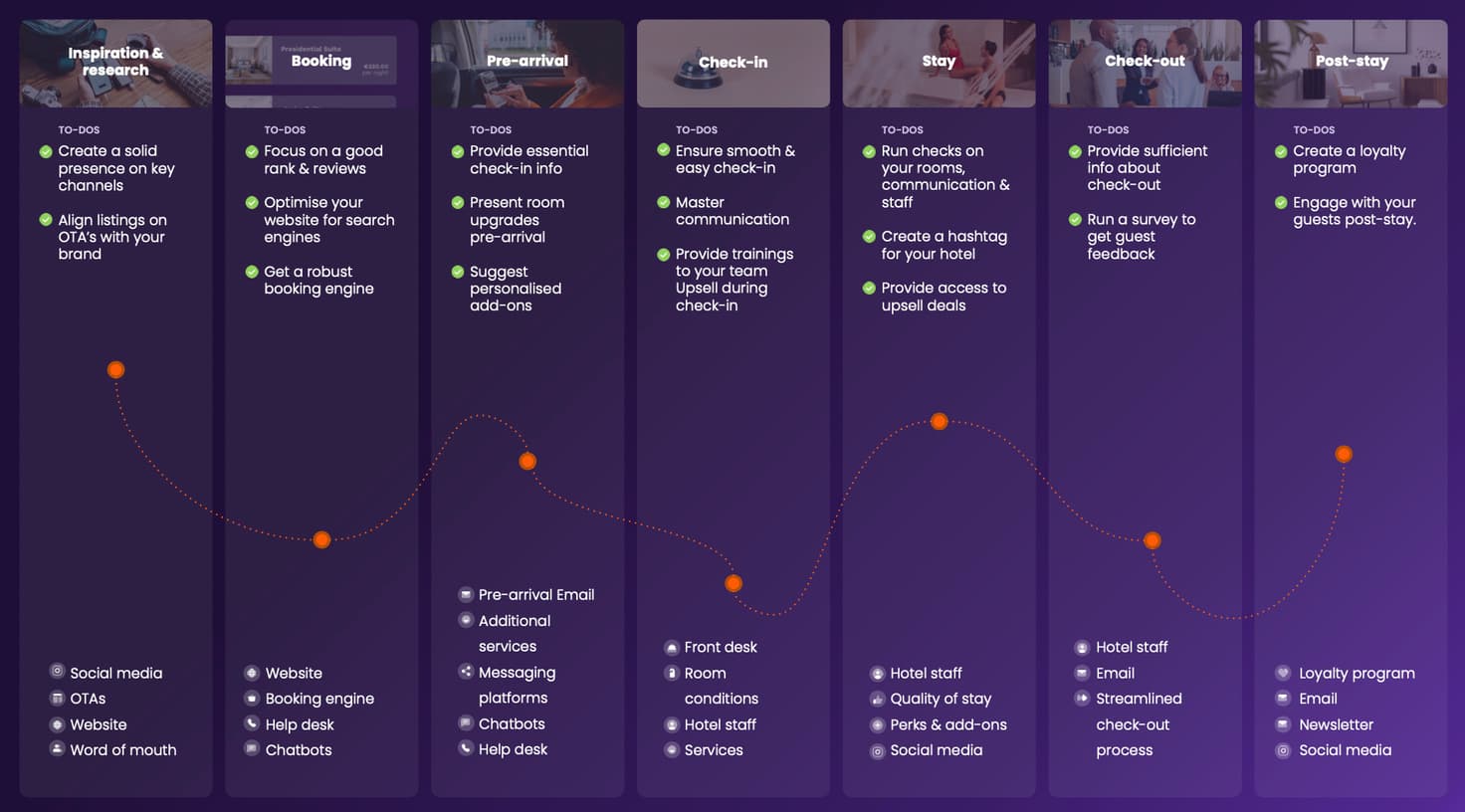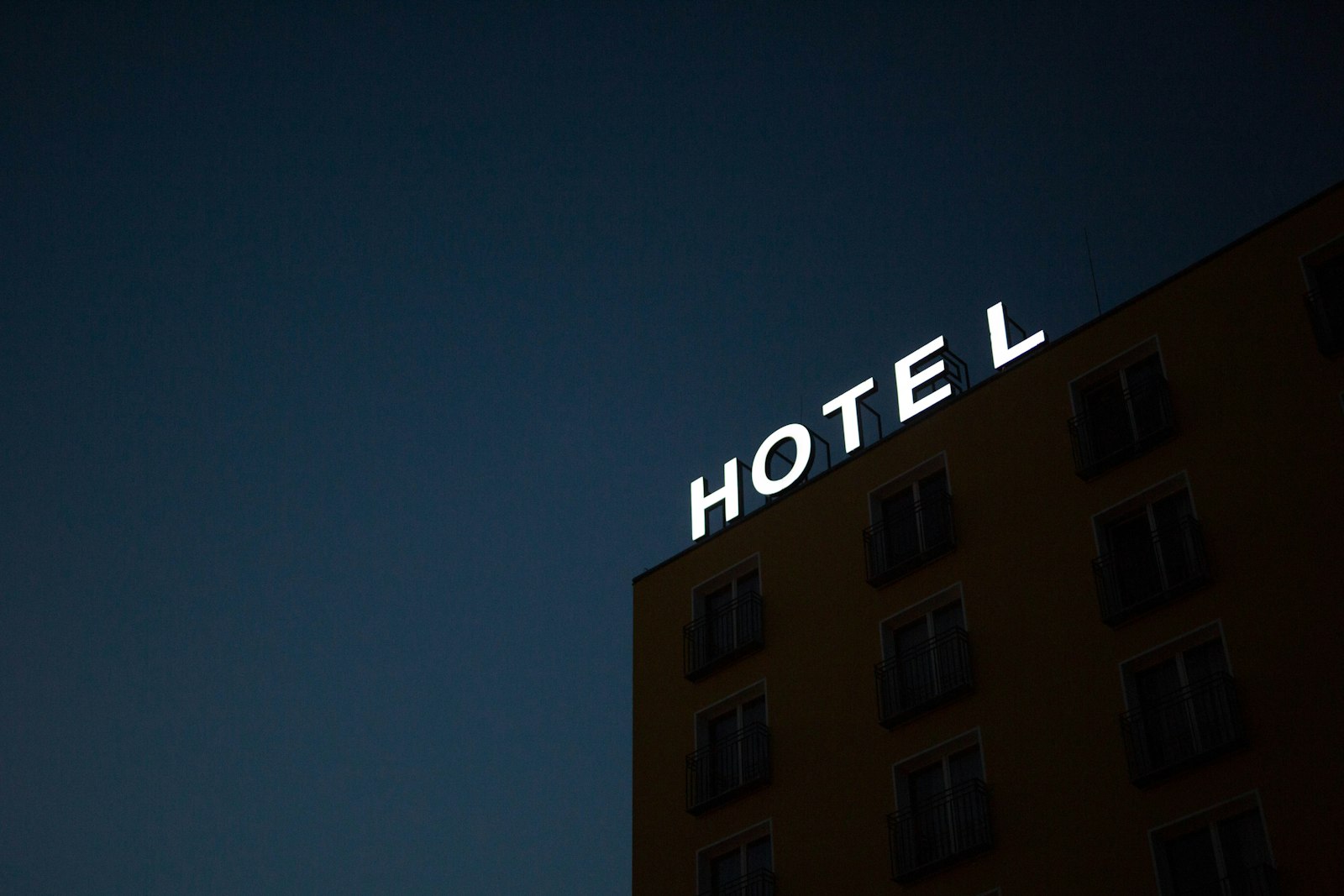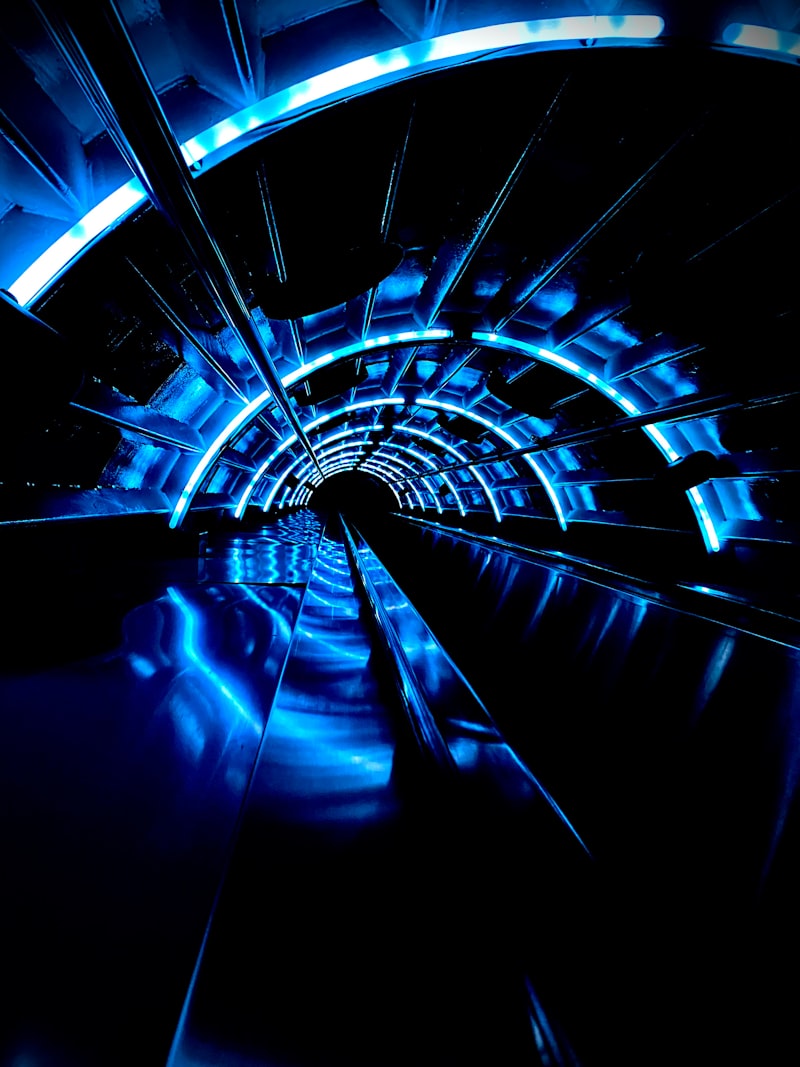As I boarded yet another 6am flight to a client meeting, I started mentally preparing my usual speech about why hotels and resorts need to make digital marketing more of a priority.
Sure, I had the data and use cases to prove my point. But as I racked up more miles in the air than I cared to admit advising hospitality brands on next-generation strategies to drive direct bookings, I realized something had to change.
I was essentially throwing the same facts and figures against a brick wall, hoping they would stick. Legacy mindsets wouldn't shift themselves. I had to meet these executives where they were at if I genuinely wanted to guide them towards results.
What I've learned over the past decade building my digital agency is that context is everything in sales and marketing. You must know precisely who you're speaking to and what motivates them before deploying messaging.
I'm not going to give a canned but accurate pitch to another brand that's stuck in the past, I'm going to talk about what hospitality marketing looks like today and how you can make your place stand out.

The Ultimate Hospitality Marketing Checklist
Website Optimization
- [ ] Mobile responsive design and fast page load times
- [ ] Clear, consistent brand messaging and calls-to-action
- [ ] Prominent visuals and videos to engage visitors
- [ ] Easy online booking and reservation process
- [ ] SEO best practices for content, metadata, links, etc.
- [ ] Site search optimization to help visitors easily find pages
- [ ] User testing and heatmap analysis to improve UX
- [ ] Google Analytics installed to track performance
Paid Advertising
- [ ] PPC campaigns optimized for hospitality keywords and geos
- [ ] Targeted social media ads focused on ideal personas and interests
- [ ] Retargeting campaigns to re-engage site visitors
- [ ] Streaming video ads to increase brand awareness
- [ ] Paid partnerships/placements on travel research sites
- [ ] Advertising copy A/B tested for maximum conversions
Email Marketing
- [ ] Lead capture forms across site to grow subscriber list
- [ ] Welcome series for new subscribers to build relationship
- [ ] Promotional and seasonal campaigns sent regularly
- [ ] Abandoned booking nurture streams to rescue leads
- [ ] Customer win-back campaigns to reactivate dormant guests
- [ ] Personalized email content matched to recipient interests
- [ ] Mobile-optimized email templates for small screens
Social Media Presence
- [ ] Active, optimized profiles on Facebook, Instagram, Twitter, etc.
- [ ] Compelling lifestyle visuals and behind-the-scenes content
- [ ] Targeted paid promotions to amplify reach
- [ ] User-generated content featuring actual guests
- [ ] Local area recommendations and partnerships featured
- [ ] Interactive polls, surveys, and contests to boost engagement
- [ ] Monitoring reviews and social listening
Branding & Messaging
- [ ] Clear brand pillars, personality, tone, and guidelines
- [ ] Differentiation strategy against top local competitors
- [ ] Hospitality-focused value proposition and slogan
- [ ] Unique selling points highlighted across touchpoints
- [ ] PR outreach to secure earned media placements
- [ ] Guest loyalty program for repeat bookings
Conversion Tracking & Analytics
- [ ] Optimized booking confirmation page with cross-sells
- [ ] Phone call tracking to monitor offline conversions
- [ ] UTMs appended to links to track channel attribution
- [ ] KPI dashboards tailored for marketing team needs
- [ ] Return on ad spend measured for all paid campaigns
- [ ] A/B tests continuously run to improve conversions
The Digital Marketing Revolution
Not long ago, hospitality marketing centered around glossy brochures, print ads in travel magazines, and promotions on aggregator sites like Expedia. The playbook was product-centric - touting amenities, room types, on-site restaurants, and nearby attractions.
While these tactics still hold some relevance today, the rise of the internet and social media has dramatically shifted marketing priorities and strategies:
- Owned digital properties - Brand.com sites, mobile apps, blogs, and social media channels allow for storytelling and direct customer engagement
- Paid digital campaigns - Google, Facebook, Instagram, and more provide platforms to precisely target and retarget potential guests
- Performance analytics - The wealth of data now available informs smarter decision-making and optimization
Simply put, marketing today is defined by owning your digital presence, perfecting your messaging based on insights, pursuing travelers proactively, and removing all friction from the booking experience.

By The Numbers
- 72% of travelers say they primarily use digital resources when planning trips, per Think with Google
- On average, travelers visit about 22 websites before making a booking, highlighting the importance of being discoverable online, per Sojern
For hospitality brands still overly reliant on older ways of marketing, the implications are clear - staying competitive necessitates major digital investments or risk losing bookings.

Mapping the Customer Journey
In the pre-internet era, marketing existed largely in a vacuum. Brands pushed messages out, hoping to capture attention and increase amble hotel foot traffic. There were giant blindspots in terms of quantifying impact and understanding the customer journey from discovery to booking.
Today's data-rich landscape empowers hospitality marketers to intimately understand audience behaviors, pinpoint the optimal media mix and messaging strategy, and continually optimize based on real-time feedback loops.

To harness these insights, forward-thinking hotel and resort marketers map the modern customer journey to identify key phases and decision points. Though the specifics may vary based on factors like location, price point, and category (business vs. leisure, domestic vs. international, etc.), common high-level waypoints include:
Inspiration & Research → Comparison → Validation → Booking → Pre-Stay → On-Property → Post-Stay
- During inspiration and research, today's traveler turns to search engines, review sites, social media, and recommendations to explore options and build their consideration set
- Comparison focuses on pricing, amenities, location pros/cons, and consumer reviews across short-listed options
- Validation is where the final selection gets buy-in from all travel party decision-makers
- Booking is the final, critical step of purchasing
- Pre-stay is the time to set expectations, build excitement, and equip guests with vacation intel
- The on-property experience makes or breaks brand affinity and guest satisfaction
- Post-stay follow-up determines whether guests become brand advocates and repeat customers
This framework provides strategic clarity around owned, earned, and paid media priorities throughout the funnel:
- Upper-funnel goals center on awareness, consideration, and preference
- Mid-funnel goals revolve around comparison shopping with urgency
- Lower-funnel goals focus on conversion
As customer acquisition costs continue rising across digital media, this customer journey perspective helps hospitality marketers allocate budgets more precisely to delight potential guests with relevance across touchpoints.
Pitfalls to Avoid
Given the complexities of today's digital marketing ecosystem, some common pitfalls threaten to sabotage return on ad spend (ROAS) for resorts and hotels. Here are a few to avoid:
Relying Too Heavily on OTA's

While online travel agencies (OTAs) like Booking.com and Expedia provide distribution benefits, an overdependence on these third-parties poses major risks, including:
- Supply and demand imbalances leading to merchant model rooms getting siphoned off by the OTAs
- Brand dilution with limited ability to stand out
- Lower ADRs and margins
- Limited guest data ownership opportunities
OTAs serve an important purpose. However, a direct booking strategy powered by owned digital channels sets up hospitality brands for greater customer lifetime value.
Taking Too Generalized of an Approach
In years past, a single television or print campaign with generic messaging could resonate broadly. In today's fragmented media landscape, consumers expect ultra personalization. Creating custom audiences and tailoring messaging accordingly is non-negotiable.
Without robust analytics and testing in place, ineffective ads and offers will hamper ROAS. Assume a one-size-fits-all approach no longer applies.

Failing to Make Mobile a Priority
Consider these mobile usage statistics:
- 76% of travelers say they use their phone for travel planning, per Think with Google
- 60% say they use their phone to book travel, per Think with Google
- +50% of searches happen on mobile, per Jumpshot
With such heavy mobile activity across the travel journey, ensuring site responsiveness, App Store optimization, and ad relevance across devices is mission-critical.

Neglecting Guest Experience
Travelers have high expectations when it comes to customer service and convenience. Brands that fail to remove friction from booking journeys or address service issues promptly place repeat visits and positive reviews in jeopardy.
Review sites like TripAdvisor must be monitored and managed to protect reputation. Being proactive and owning the guest relationship from start to finish minimizes bad buzz.
Not Measuring Performance
Digital marketing without measurement frameworks in place is like wandering aimlessly without a map. How else can you assess channel efficiencies, asset effectiveness, audience behaviors, and campaign lift to inform optimizations?
Key performance indicators (KPIs) like click-through rates, cost per lead, and booking revenue tied to granular data points on ads, landing pages, emails, and more enable progress tracking.
Carefully designed analytics frameworks shine light on successes to double down on and problem areas requiring attention. Testing into wins becomes possible.

The Path Forward
The playbook for profitably acquiring new guests and growing direct booking revenue has advanced considerably thanks to digital disruption. For hospitality brands still relying on legacy marketing tactics, the time for a paradigm shift is now.
At my agency, we guide clients on making this transformation based on strategies that generate proven outcomes:
Optimizing For The Entire Funnel
With granular measurement systems in place, creative, messaging, calls-to-action, and offers can be tailored to serve upper-funnel awareness goals, mid-funnel consideration and preference gains, and lower-funnel conversion objectives. Holistic optimization drives more high-quality traffic which converts at higher rates.
Focusing on Lifetime Value
The end game goes far beyond a single booking transaction. Loyal, high-value guests that promote a brand via word-of-mouth and become repeat customers are the ultimate prize. Hotel and resort marketing today takes a longer view towards customer lifetime value.
Balancing Paid & Owned Reach
An overdependence on paid platforms leaves brands vulnerable to rising CPCs and walled garden algorithm changes. Growing direct traffic to owned sites protects profit margins long-term. SEO, content marketing, and email marketing combine with paid efforts.
Delivering Personalization
Custom audiences and segmentation strategies allow hospitality brands to tailor messaging around special offers, location-specific attractions, room types, on-site amenities, and more based on unique visitor and guest characteristics. Context wins conversions.
The playbook will surely continue advancing, but brands that start leveling up their digital marketing capabilities now will maintain an edge on less agile competitors. It comes down to letting data guide decisions rather than assumptions or gut feels.
The customer journey produces endless signals. Unlocking and acting on those insights is the hospitality marketer's compass pointing towards growth. Your brand's future booking trajectory depends on it.
FAQ
What are some key differences between traditional vs. digital marketing for hospitality brands?
The differences are plentiful. Traditional marketing centered on print, radio, and television promotion. Messaging was generic, reach was limited, and measurement was nearly impossible. Digital marketing allows for data-driven audience segmentation, personalized messaging based on traveler needs, global reach across platforms like Google and Facebook, and in-depth performance tracking tied to ROI. Owned channels like brand sites and social profiles enable two-way engagement. The marketing mix has fully shifted with digital taking precedence given the granular targeting and optimization possible.
Why has reliance on OTAs become so risky for hotels and resorts?
While OTAs offer distribution benefits, an overdependence on third-parties like Expedia and Booking.com poses major threats. OTAs siphon off merchant model room inventory, dilute branding with limited differentiation, drive down average daily rates, and inhibit direct customer data ownership. Their algorithms highlight OTA-friendly rates first too. Although OTAs serve a purpose, hotels and resorts must pursue direct booking strategies to control inventory and nurture guest lifetime value. This could include promotions that incentive booking on brand sites or flexible cancelation policies.
How does mapping the modern customer journey help hospitality marketers?
Data reveals today's traveler engages in extensive prep and research online before booking. There are clear waypoints spanning inspiration, comparison shopping, validating options, and finally purchasing. By mapping this journey for their specific audience, hospitality brands can tailor owned, earned, and paid strategies to serve travelers with relevance whenever and wherever they engage. The goal becomes moving leads down the funnel via strategic messaging, offers, and experiences. Without this level of context, marketing effectiveness suffers greatly.
Why should mobile optimization be a top priority?
Consider that 76% of travelers leverage their smartphone for travel research while 60% complete bookings on mobile. This highlights how vital optimizing for mobile has become across the entire marketing funnel - from branded display ads to seamless on-site reservations. Slow load times, clunky UX, and tiny CTAs on mobile threaten conversion rates. Negative reviews stemming from mobile struggles also impact reputation. Technical audits, app store optimization, responsive web design, and device-level campaign management maximize mobile's revenue potential.
What are some pitfalls that cause brand marketing efforts to underperform?
Many factors can inhibit marketing success. Relying on a generalized, one-size-fits-all approach rather than tailored messaging fails to resonate. Neglecting the end-to-end guest experience opens the door to negative sentiment. Not having the right KPIs and measurement systems in place makes meaningful optimization impossible. Outdated creative, offers, and calls-to-action also hamper performance regardless of platform. Taking time to clean up foundational elements while leveraging data to drive every decision sets digital marketing programs up for sustainable success.
Why is focusing on customer lifetime value better than optimizing for a quick booking?
The temptation exists to pump up new customer acquisition numbers without accounting for retention and loyalty. This risks driving the wrong types of leads that deliver single transaction value rather than long-term value. True success comes from positioning your resort or hotel as the preferred option throughout the travel journey, building affinity via engagement, incentivizing direct bookings, and nurturing guests into brand advocates who actively reference you within their networks. It costs up to 7 times more to attract new customers versus sustaining existing ones. Keep the big picture in mind.
What types of metrics should hospitality marketers track to gauge performance?
Marketers need visibility into metrics aligned with each phase of the funnel - from awareness and consideration at the top to research, comparisons, and conversion further down. Example upper-funnel KPIs include social reach, site traffic sources, branded keyword volumes, email open rates. Mid-funnel KPIs revolve around time on site, click-through rates, and content consumption. Lower-funnel KPIs include revenue contribution by source, promo code usage, referrals, and customer lifetime value. Blend digital marketing standard metrics with hospitality-specific data points.
How exactly does personalization lift marketing results?
Personalization leverages data to deliver relevant experiences aligned with customer needs and behaviors. In hospitality, this could mean tailoring promotions around location, room types, on-site amenities, groups vs. individuals, and so on. Personalized subject lines increase open rates, customized on-site experiences reduced bounce rates, and hyper-targeted ads resonate better. Personalization also fosters brand affinity when done properly. Testing permutations and monitoring growth metrics reveals optimal segments and messaging.
What are some owned channel examples beyond the main website?
While the brand website is the mothership, owned channels also include blog content that ranks organically, social media profiles on Facebook and Instagram, and email nurture streams. Growing direct traffic to these assets reduces dependence on paid platforms. Some also tap into user-generated content on YouTube. The goal is to surround travelers with value and engagement that pulls them into your orbit across the web.
How can hospitality marketers get better visibility into campaign performance?
Robust analytics tools are imperative for maximizing marketing ROI. Platforms like Google Analytics, Google Tag Manager, and marketing dashboards expose volumes of behavioral data - device types, geographic origins, page flows, content interactions, ad engagement, form fills, and more. Tightly integrating analytics with each channel, campaign, and experience enables precise optimization based on real-time feedback. It takes considerable expertise to implement properly, but the payoff in terms of converting high-quality traffic is immense.






